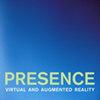外科模拟:急诊医学培训的新兴技术
IF 0.7
4区 计算机科学
Q4 COMPUTER SCIENCE, CYBERNETICS
引用次数: 96
摘要
目前培训医务人员提供紧急医疗服务的方法有几个重要的缺点。例如,在伤口清创技术的培训中,使用动物模型来获得治疗创伤性损伤的经验。我们提出了另一种方法,即创建一个三维的、交互式的人体计算机模型,该模型可以在虚拟环境中用于学习和练习伤口清创技术和高级创伤生命支持(ATLS)程序。作为第一步,我们已经开发了一个计算机模型,它代表了正常和受伤下肢的解剖和生理学。当在虚拟环境中可视化和操作时,该计算机模型将减少创伤管理训练中对动物的需求,并可能提供优越的训练体验。本文介绍了在实施初步制度的过程中所做出的发展选择,以及为创造一个有效的医学培训环境所必须面对的挑战。本文章由计算机程序翻译,如有差异,请以英文原文为准。
Surgical Simulation: An Emerging Technology for Training in Emergency Medicine
The current methods of training medical personnel to provide emergency medical care have several important shortcomings. For example, in the training of wound debridement techniques, animal models are used to gain experience treating traumatic injuries. We propose an alternative approach by creating a three-dimensional, interactive computer model of the human body that can be used within a virtual environment to learn and practice wound debridement techniques and Advanced Trauma Life Support (ATLS) procedures. As a first step, we have developed a computer model that represents the anatomy and physiology of a normal and injured lower limb. When visualized and manipulated in a virtual environment, this computer model will reduce the need for animals in the training of trauma management and potentially provide a superior training experience. This article describes the development choices that were made in implementing the preliminary system and the challenges that must be met to create an effective medical training environment.
求助全文
通过发布文献求助,成功后即可免费获取论文全文。
去求助
来源期刊
CiteScore
2.20
自引率
0.00%
发文量
8
审稿时长
>12 weeks

 求助内容:
求助内容: 应助结果提醒方式:
应助结果提醒方式:


